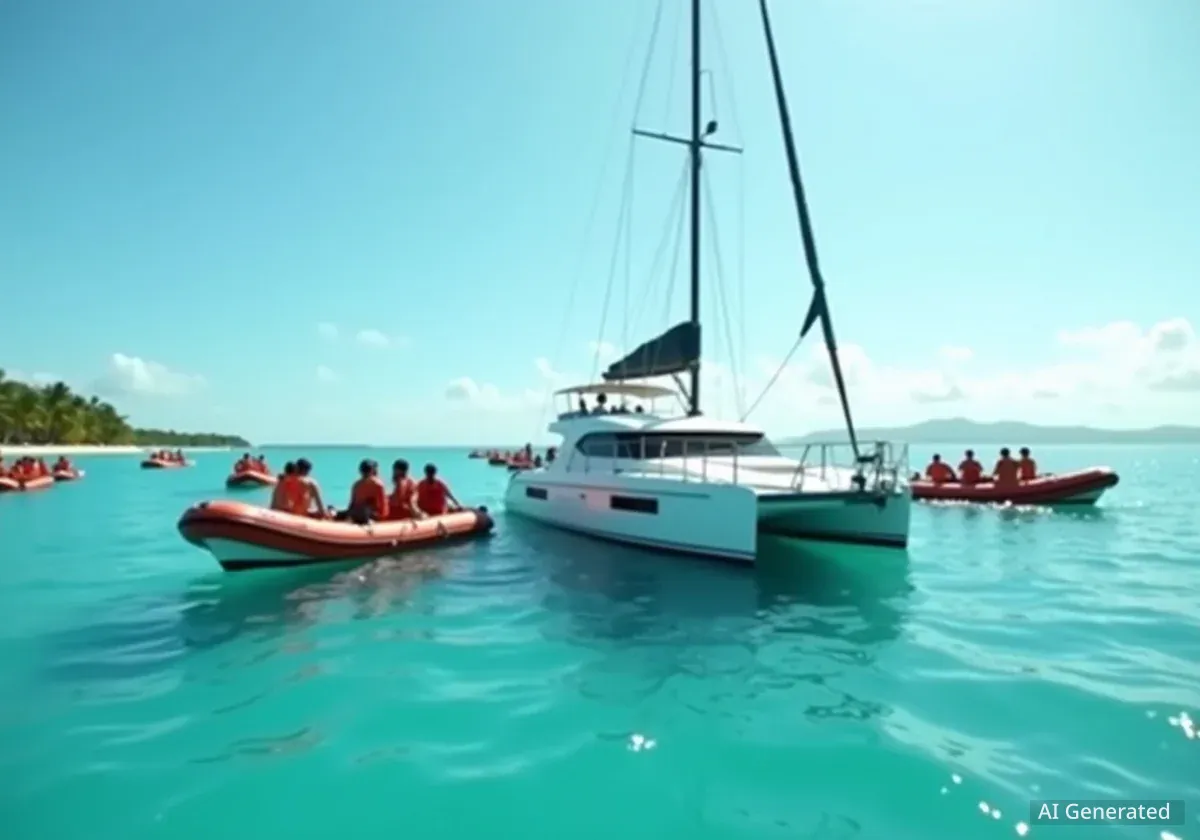A Qantas Airways flight bound for Johannesburg was forced to return to Sydney mid-journey after experiencing a technical fault. Flight QF63, an Airbus A380 carrying over 400 passengers, had been in the air for approximately four hours on Tuesday before the crew decided to turn back south of Tasmania.
The aircraft landed safely back at Sydney Kingsford Smith Airport (SYD) early the following morning. This incident highlights the critical role of modern communication systems in long-haul aviation, particularly over remote oceanic regions.
Key Takeaways
- Qantas flight QF63, an Airbus A380, returned to Sydney due to a technical fault.
- The issue involved the aircraft's satellite communication system.
- Over 400 passengers were on board the flight to Johannesburg.
- The decision to return was precautionary, with no immediate safety threat.
- Passengers received hotel accommodation and were rebooked for the next day.
Flight Details and Incident Overview
Qantas flight QF63 departed Sydney at 11:18 PM UTC on December 25. The destination was Johannesburg (JNB). The aircraft, an Airbus A380-842 with registration VH-OQG, had been flying for nearly five hours. It was operating a crucial long-haul route when the technical issue occurred.
The specific fault was with the aircraft's satellite communications system. This system is vital for maintaining contact with ground control and airline operations, especially when flying over vast areas without traditional radar coverage. The crew initiated a U-turn while near the coast of Antarctica.
Aircraft Information
- Aircraft Type: Airbus A380-842
- Registration: VH-OQG
- Age: 15.4 years
- Engines: Four Rolls-Royce Trent 900 engines
- Passengers: 410
According to Qantas, the decision to return was a precautionary measure. There was no immediate safety threat to the 410 passengers or the crew. The aircraft did not issue a mayday call. The crew followed established safety procedures by coordinating with Sydney Airport authorities for the return landing.
The Importance of Satellite Communications
Satellite communication systems are essential for modern aviation, particularly on ultra-long-haul flights. These flights often cross remote regions, such as the Southern Ocean, where traditional communication links and radar coverage are unavailable. The systems allow flight crews to maintain continuous contact with air traffic control and their airline's operations centers.
Without reliable satellite connectivity, airlines may face restrictions on operating safely across these vast oceanic areas. This makes redundancy and system reliability critical for long-distance air travel. The incident with QF63 underscores how heavily modern aviation relies on these advanced communication technologies.
"The decision was precautionary, as satellite communications are essential for maintaining contact while crossing remote regions such as the Southern Ocean," a Qantas spokesperson stated.
Long-Haul Flight Challenges
Flights like Sydney to Johannesburg cover immense distances over oceans. These routes require robust communication and navigation systems. Aircraft must be able to communicate effectively with ground control, especially when outside the range of land-based radar. Satellite systems provide this critical link, ensuring flight safety and operational efficiency.
Passenger Impact and Airline Response
Upon landing safely back in Sydney at 8:32 AM UTC on December 26, all 410 passengers were provided with hotel accommodation. Qantas confirmed that its engineering teams would inspect the aircraft. The goal is to identify the precise cause of the fault before the aircraft returns to service. This process is standard for technical issues.
Qantas also arranged for all affected travelers to continue their journey to Johannesburg the following day. For the replacement service on December 26, Qantas deployed another Airbus A380, registered as VH-OQA. This particular aircraft holds historical significance as the first A380 delivered to Qantas in 2008, making it the oldest of its type in the airline's fleet.
Qantas A380 Fleet Operations
Qantas currently operates a fleet of 10 Airbus A380 aircraft. These large passenger planes are primarily used on high-demand international routes. Key routes include Sydney to Los Angeles (LAX) and Sydney to London Heathrow (LHR). The A380 is known for its capacity and long-range capabilities.
- Total A380s in fleet: 10
- Primary routes: Sydney–Los Angeles, Sydney–London Heathrow
- Replacement aircraft for QF63: VH-OQA (first A380 delivered to Qantas)
The airline's quick response in arranging accommodation and a replacement flight aims to minimize disruption for passengers. Incidents like these, while rare, highlight the rigorous safety protocols in place for long-haul commercial flights.
Previous Incidents and Safety Protocols
This incident is not the first time Qantas has experienced a mid-flight technical issue. Aviation safety regulations require airlines to prioritize passenger safety above all else. Decisions to return to an airport are often precautionary, even when there is no immediate danger, to ensure all systems function optimally for the entire journey.
For instance, Qantas flight QF141 recently landed safely in New Zealand after making a mayday call. Such events demonstrate that flight crews are trained to handle various technical issues and prioritize safe operations. The airline's engineering teams conduct thorough inspections after such incidents to prevent future occurrences.
The aviation industry maintains strict standards for aircraft maintenance and operational procedures. These standards are designed to ensure safety, even when unexpected technical problems arise during a flight. The QF63 incident serves as a reminder of the complex systems that enable global air travel and the continuous efforts required to keep passengers safe.





